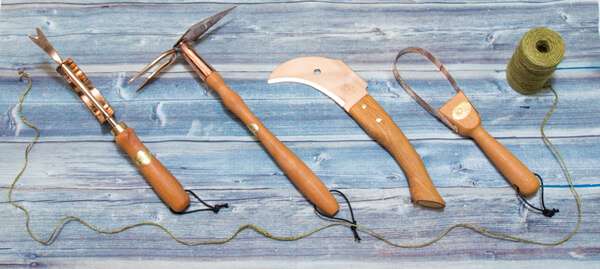Origins
The first metal tools ever forged were likely made from copper. As a building material, copper was far softer than stone, but that made it far more malleable and easier to shape for different tasks. Copper was soon replaced by bronze, however, which is a far stronger material. Combined with the experimental designs created with copper, the bronze age gave rise to new forms of tools that could perform a number of different, specific roles.
Original smelters added arsenic to copper to create bronze, but the toxic fumes emitted by the arsenic during smelting affected the eyes, lungs and skin. Tin was the next point of interest; the bronze alloy created by a 90% copper – 10% tin composition was stronger and easier to cast than copper alone. When polished, bronze would also break out in a golden sheen that mimicked the look of a true golden tool. Tools and weapons created in copper soon became as much about prestige and status as practicality.

Viktor Schauberger
The most famous advocate for bronze tools was the biomimicry experimenter and naturalist, Viktor Schauberger. Born in Austria, Schauberger was a forester who rejected academic training to remain in the woods and mountains to run his own experiments. Although most of his inventions centred on different uses for water, his great exception was his copper tool project.
After years of experiments and observations, Schauberger concluded that cultivating soil with copper instruments would be more beneficial to the Earth and lead to healthier plant growth. Primarily, he believed that using metal tools, which decay and rust far quicker than copper or bronze, was incompatible with the process of plant growth. How could one justifying using a decaying tool to help make a plant grow? He also surmised that growth best occured in cool conditions – heat, he argued, was primarily used to decay or kill, rather than to invigorate. Iron tools, with a greater frictional resistance than copper and bronze, increases the temperature of the soil during use. Bronze, however, stays cool.
Finally, Schauberger concluded that iron, as a sparking metal, depleted the electrical charge of rising groundwater, leaving less for the plants. Copper and bronze are non-sparking metals, meaning that groundwater retained its electric charge as it rose. His observations may have seemed wild conjecture to some, but in the late 1940s, fourteen trials across eight crops proved his theories correct. Seven crops were cultivated with a traditional steel plough, and the other seven with a copper plough. Results were consistent across the board – crops cultivated by copper bore larger, healthier yields with fewer pests.
Copper Tools
If you wish to run your own garden experiment, Primrose has launched a range of beautiful copper tools that will surely stand the test of time. Although aesthetically pleasing, these tools are made from high-grade, work-hardened bronze that will make light work of your gardening tasks whilst helping cultivate the soil with beneficial copper trace elements.

–
Ross works in the Product Loading department and gets to see all the weird and wonderful products that pass through Primrose. Ross is a life-long Southampton fan and favours jazz music, reading and a quiet place to enjoy them.
